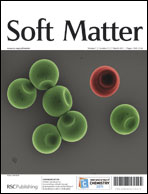Polythiophene precursor electrochemical nanolithography: highly local thermal and morphological characterization†
Abstract
We describe the formation of nanopatterns on an electroactive polythiophene precursor (polyterthiophene methylmethacrylate, P3T) film using a current-sensing atomic force microscopy (CS-AFM) technique.


 Please wait while we load your content...
Please wait while we load your content...